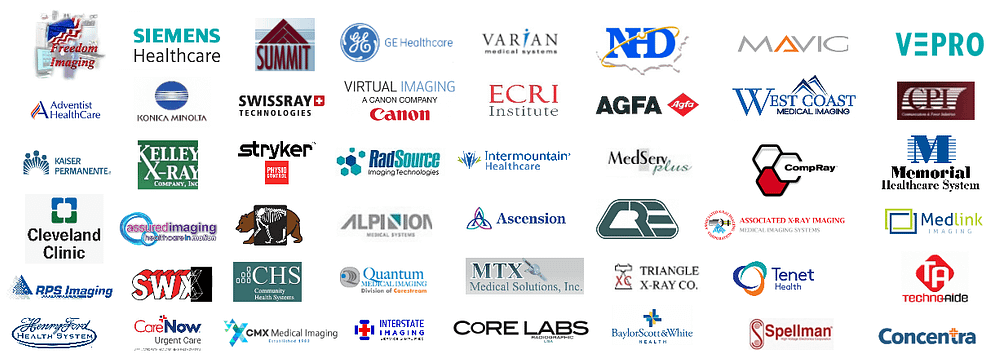FOR MEDICAL DEVICE SALES AND SERVICE COMPANIES: HOW TO ADD $1M - 3M+ IN SALES IN 12 MONTHS OR LESS WITHOUT ADDING ANY NEW SALESPEOPLE
In this page, I’m going to walk you through the exact process you can use to add millions of dollars to your top-line sales in 12 months or less, without adding any new salespeople to your team.
I’ll show you exactly what you need to do to get predictable sales, predictable conversions, and consistent and scalable performance from your salespeople and teams.
Who This Is For: Owners and Sales Managers of Medical Device Sales and Service Companies

This is for you if you want to add at least 1 Million dollars a year to your sales top-line revenue.
You’ve got great offerings, both with your product and service solutions, but your sales team:
- Isn’t producing nearly what they should be in terms of revenue, new clients, or additional business with existing customers
- Has difficulty converting leads into opportunities, and opportunities into closed business
- Spends more time talking about price than value, which is squeezing your profitability
- Would rather chase low margin/poor fit business with existing clients, rather than do the hard work of prospecting and winning new clients.
You might be getting push back from your sales team about your pricing, your products, and the market itself.
Or you use distributors and reseller channels that need to up their game and increase sales performance.
In the rest of this post, we’ll show you how to change those negative results and how you can easily introduce sales best practices into your business.
The Master Keys Of Medical Device & Service Sales
You work hard to grow your business. You’ve built a great company and offer solid products and service to healthcare providers. Many clients value your company and love doing business with you. So why are the headwinds keeping you from adding more business so strong? Why aren’t your salespeople doing better?
You’re asking yourself:
- What should my growth goal be for the next twelve months?
- What’s the most effective way to scale up my sales process?
- How can I create predictable and scalable growth?
- How can I spend less time working in the business and instead spend time growing the business?
You’re working hard. You’re putting in the long hours. You’re doing what the business needs.
You see other companies hitting their numbers - OEMs going direct and taking your market share. What are they doing that you’re not?
The answer isn’t what you’d expect.
Everyone is facing the same market challenges, hiring salespeople from the same pool of talent, and experiencing the same headwinds of healthcare.
Contrary to what you might think, companies that are growing sales are NOT smarter, better or even luckier than you.
So what makes them so successful?
Founders and leaders who double or triple their sales are running their sales teams using a completely different playbook.
One that most people don’t even know exists.
A playbook that has clearly defined objectives that achieve the goals of the business, and holds the sales team accountable for execution. A playbook that dramatically improves performance by doing the right activities in the right order, executed skillfully.
Soon we’ll dive deep into how you can make this playbook a reality for your business and get your sales rocketing to where you need them to be.
4 Principles, 3 Steps and 1 Central Idea
The complete answer to how to achieve sales growth for Medical Device Companies can be summarized in 4 principles, 3 Steps and 1 Key Idea.
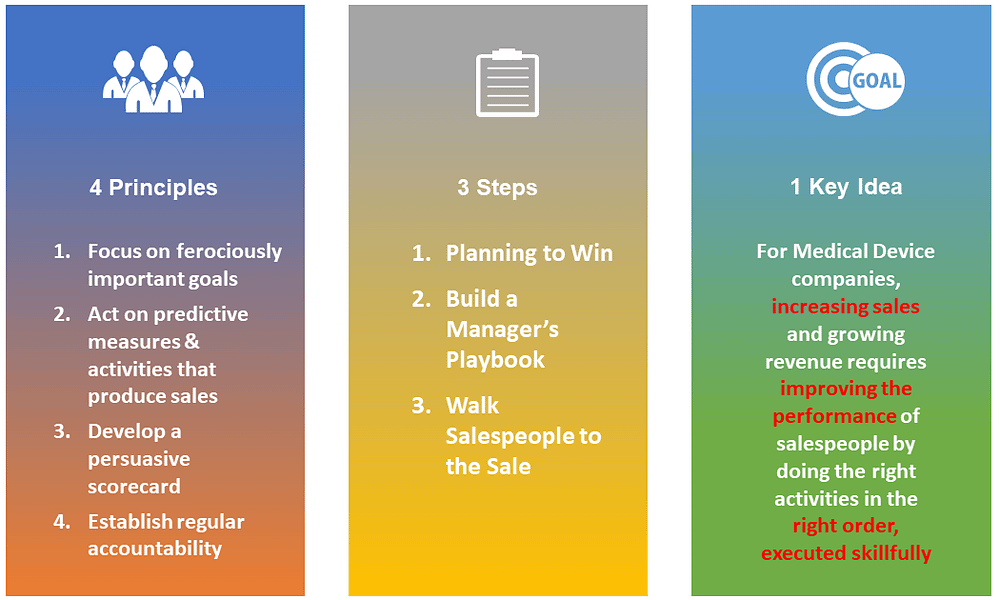
For Medical Device companies, increasing sales and growing revenue requires improving the performance of salespeople by doing the right activities in the right order, executed skillfully.
You get your team to the point where they can do the right things, in the right order, executed skillfully by working through a process:
- Establish your current state (present) - the WHERE
- Determine your future state - your goal - the WHAT
- Identify the gap between items 1 and 2 - the WHY
- Create a Gap & Hurdle obliterating Playbook - the HOW
- Walk-to-More Sales with each salesperson - the DO
We work with clients to create dramatic improvements in their sales organizations by clearly defining the expectations for your sales team, and solving any obstacles in their way. We help you create a mentoring handbook and then work with you in upgrading your team’s skills, abilities and performance to attain their sales quotas.
What differentiates our process from other sales improvement plans is that it has been created by Medical Device salespeople, and it’s been used successfully with medical device & service sales teams. What makes the system work is the specialized expertise and experience that comes with the process.
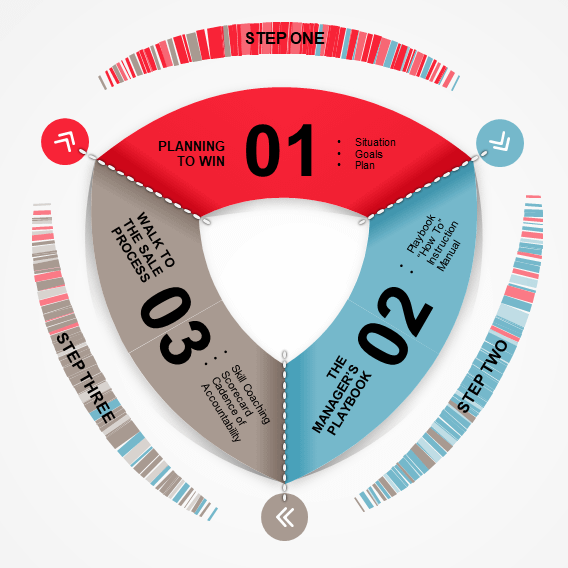
Go from WHERE you are today → to WHAT you want → by solving the WHY's obstructing → with the expertise of HOW to obliterate the hurdles and gaps → then DOING the right sales activities in the right order, skillfully = SUCCESS $1M - $3M+ Sales Increase
The Proof is with the Medical Device Companies I’ve helped…
I've spent the last 30+ years in the medical device & service industry, working with OEMs, ISOs and hospitals. My Lead-to-Sales process isn’t an academic creation or an ivory tower solution. It was created by wearing out shoe leather in the field selling every day to hospitals, imaging, centers, and other clinicians
Sheri - Territory Manager for an ISO
$70k to $1.4M in Sales
George from and ISO and Equipment Reseller
Losing money on $200K in Sales to becoming largest local ISO with annual sales of over $5M
Before: Unproductive territory far under-producing other territories and reps
After: $1.4M in sales that exceeded previous sales by $220K and quota by $450K
Time Frame: 3 months to $120K, 12 months to $1.4M

Before: 5 sales rep only producing $200k in annual sales but costing almost $1M in 2 years
After: 22% growth quarter over quarter. ROI on salesforce in first quarter
Time Frame: First Quarter, Constant Improvement 2 years running
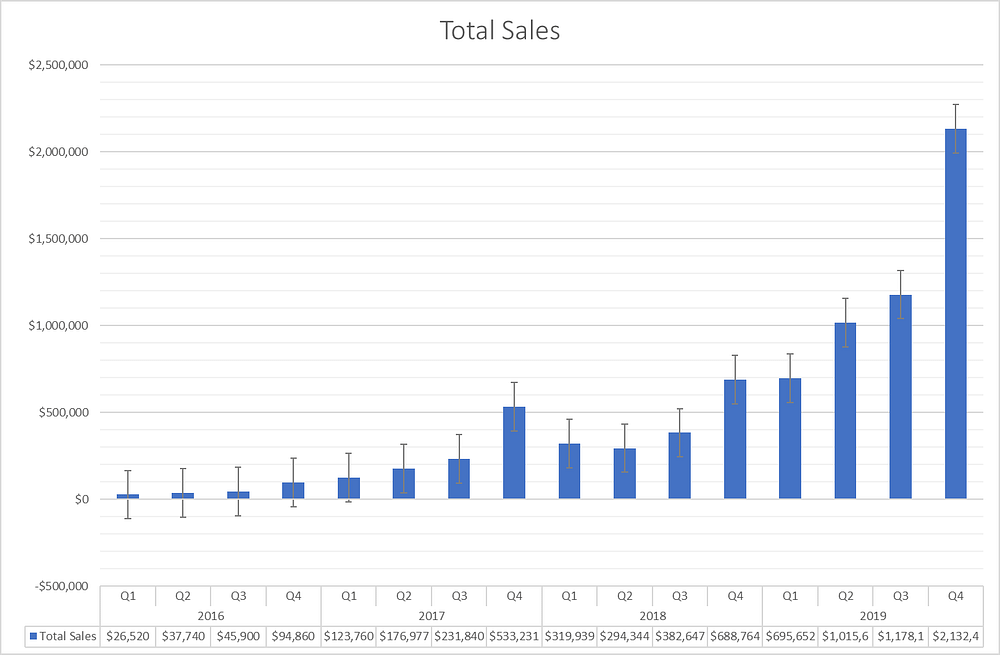
Marcus at a Regional ISO
$1.6M to $3.4M in one year
Dave from an ISO of Radiology Products
Stalled Growth to an overall 35% increase in sales and a 220% increase in new accounts in 4 months.
Before: Loss of their highest performing sales rep reduced sales by $340K per quarter
After: Sales increased 213% in 8 months. Customer attrition eliminated.
Time Frame: 8 months
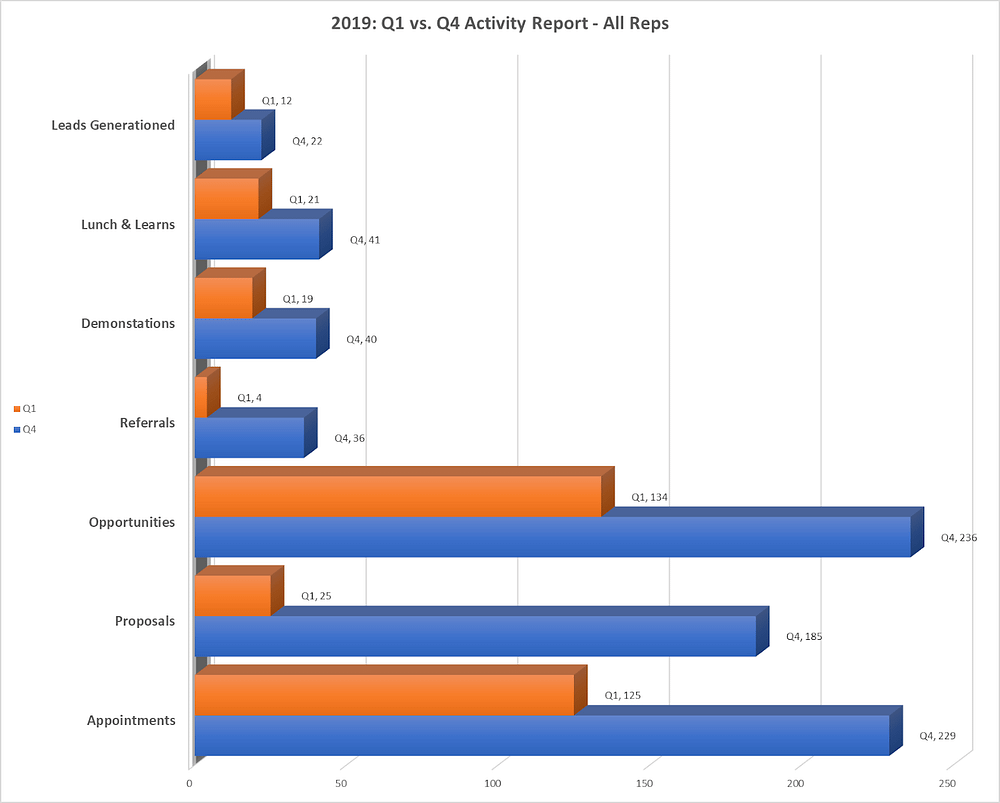
Before: Declining growth and no new accounts. Salespeople were only selling to existing accounts. No system or consistency across the sales team
After: Increased new customer accounts by 220% in the first 4 months and overall revenue by $2.6M in 12 months
Time Frame: 12 months
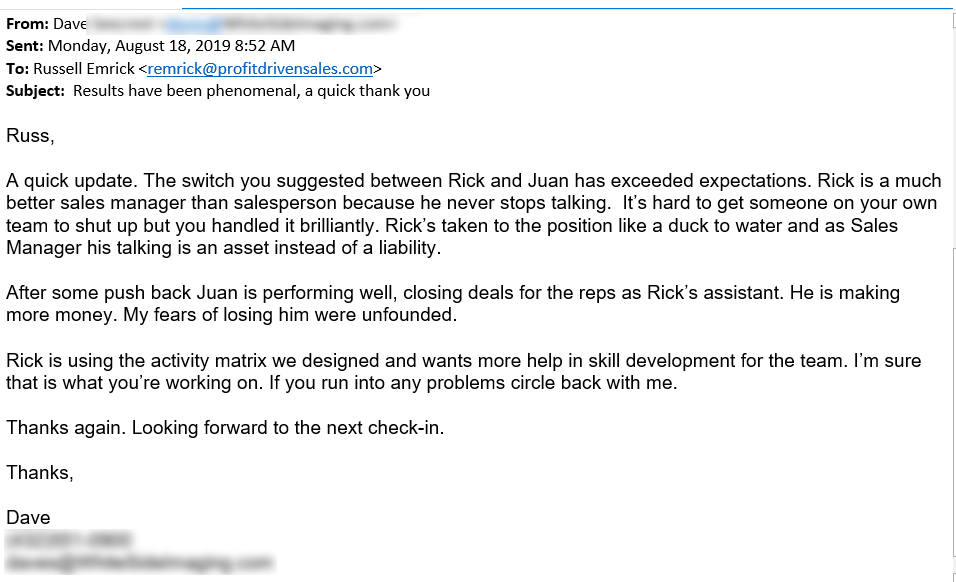
Mike - PACS and Medical IT vendor
$0 to $450Kin Sales in 5 Months
Scott from #3 DR Manufacturer
$3.2M to $11.6M in Sales in 12 Months
Before: Spending $1M on a sales team that produced no sales except OEM referrals
After: Reduced selling costs to under $250K and generated $250k in sales quarterly
Time Frame: 7 months
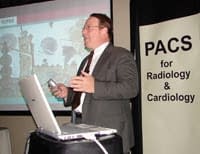
Before: Worst sales division in the company for a decade; No reps hitting their quota
After: Finished the year above quota by increasing sales to $11.6M from the previous year’s 3.2M. #2 division in the company. Every rep hit or exceeded their quota
Time Frame: 1 year

John from Global Manufacturer of Digital Radiology Equipment
$0 to $2.6 Million US in Annual Sales in 6 Months, Service revenue uptick to $6.7M
Frank at a Regional ISO
$336,000 of additional profit in 6 months
Before: Sales declined from $25M to $0 as the market shifted technologies, 12 reps only sold upgrades and service to existing accounts. Extremely high turnover of reps - 6 in one year
After: New account sales went from zero to six in the first year. Increased capital sales of new installations to $1.2M
Time Frame: 1 year
Before: Chasing bad deals had the win-rate of salespeople stalled below 30%
After: Increased number of qualified opportunities and win-rate above 41%. Deals closed in Q1 and Q2 that would not have closed without these changes resulted in adding $336,000 in bottom-line profits for the first half of the year
Time Frame: 6 months
Kevin at a Regional ISO
$419,00 in additional profit in 7 months.
Chris at a Regional ISO
$1.8M to $2.6M in one year
Before: Competitors driving down margins. Salespeople focused on price. No uniform messaging between reps
After: An additional $267,000 in profit was added to the sales by focusing the sales team on value based selling, and giving them new skills & scripts
Time Frame: 7 months
Before: No plan, no leads, company was being pushed further and further downstream to specialties with smaller deals and lower margins
After: Sales were increased from $1.8M to 2.6M in a year by changing the go-to-market approach of the company and moving back upstream
Time Frame: 1 yea

George at a Regional ISO
$1.2M Top-Line Increase in a year
Before: Sales stalled and forecasts were indicating a substantial decline in revenue. Two sales reps and three service reps poached by his largest OEM partner, who then took the territory direct. An online seller supported by their National Reseller owner took clinic business and eroded margins on downstream sales.
After: Applied Lead-to-Sales methodology to focus all efforts on the relevant KPIs (including appointments per week, proposals per month, and for customer expansion), and building the skills to improve those KPIs. The decline of sales was reversed and $1.2M in additional sales were closed over the previous year.
Time Frame: 1 year
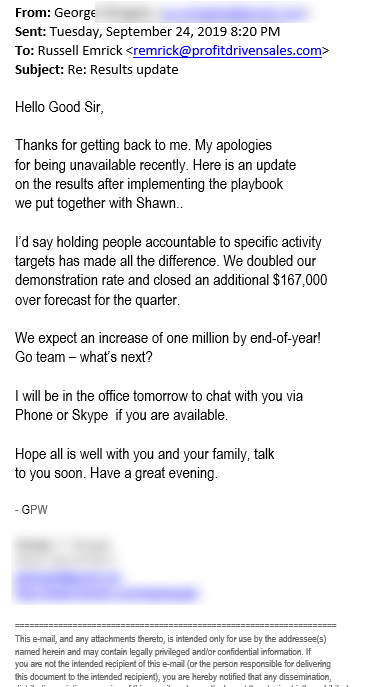
Let's Flesh Out the Lead-To-Sales Process More Fully...
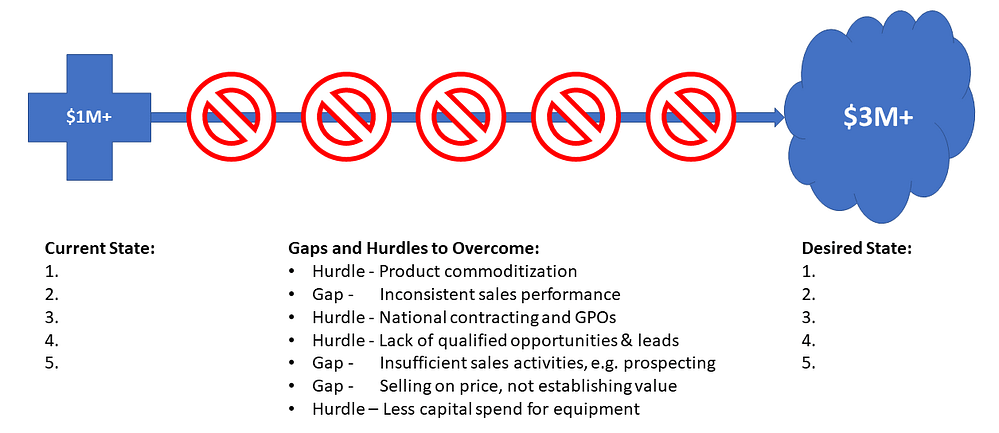
Step 1: Planning to Win
Every great initiative starts with planning. The better the planning the greater the success. The better the foundation, the higher and stronger the building will be.
This step, Planning to Win has three important components:
Getting clarity on the current situation
Establishing the goals (destination) you want to achieve
Charting the course: finding and solving existing hurdles and gap

Part 1: Get Clear On Where You Are Now
Planning starts with getting very clear about where you are starting from:
What assets and resources do you have to work with?
Do you understand your clients buying process?
Do you know your current results, costs, and performance levels by salesperson for at least each of these 3 areas?
What are the activity levels needed for key sales tasks and are each of your salespeople meeting those levels?
What are the gaps and obstacles that have been preventing sales growth?
What challenges are the salespeople reporting that are impeding growth?
Are these challenges consistent across all salespeople, or is each salesperson reporting different issues?
In short, Part 1 is where we get clear on your starting position and your numbers.
Here is where we’ll find the gaps that we need to fill in order to help our salespeople reach and surpass their quotas.
If you already have the information you need, it’s just a matter of collecting it in one place and interpreting it. If you don’t have it, we’ll help you start measuring these key metrics, so that you can chart a more direct path to your goals.

This is the part of the process where the deck gets stacked in your favor. We do that by ensuring that you know what will have the greatest and fastest impact for the business.
Part 2: Goal Creation and Alignment
Having determined where you’re starting from, now let’s dig deep into where you want to go. Let’s establish the most important goals of the business and translate those goals into objectives for the sales people to achieve: an OKR system - Objectives and Key Result.
OKRs translate your business aspirations into tangible objectives whose success or failure is measured by specific and quantifiable Key Results. This is the same system Intel and Google used to become two of the most valuable companies on the planet. OKRs are what Andy Grove, Bill Gates, Larry Page, and other luminary CEOs credit their success to.
Steven Covey (“The Seven Habits of Highly Effective People”) famously said that the best way to start anything is to “begin with the end in mind.” So here in our journey you decide what your goals are.
Where do you want to be?
What Objectives will be required to get there?
How will we measure progress and achievement - Key Results?
Goal setting might seem easy or obvious, but setting the right goals can be a tricky thing:
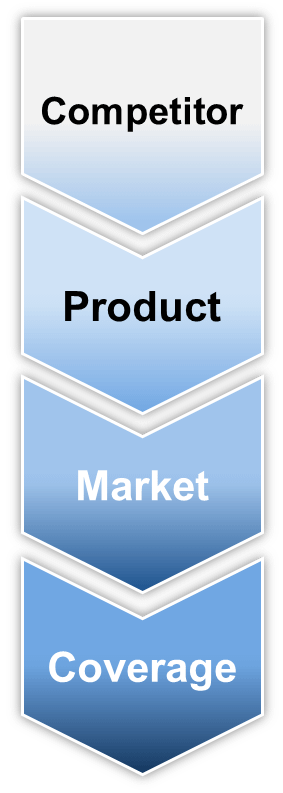
Do you want top-line growth or more market share?
Is revenue growth top priority or is increased profit more important?
Are the people responsible for achieving the goals (ie your salespeople) on-board?
Do they agree with the goals and are they willing to commit to accomplishing them?
What will your salespeople need to do differently in order to hit these goals?
Thinking through these questions may be the most important part of the process. This isn’t conventional goal setting. Sales goals by themselves aren’t necessarily actionable and may not even be aligned with the larger overarching business goals.
Goal Setting used conventionally is just a tactic, not a strategy - which is why goal setting seldom really works. How many New Year’s goals survive past January?
Critically here, we’re considering your larger goals and creating actionable (and immediate) objectives. Many programs talk about the importance of focusing on the long term goals, but it’s far more important to be crystal clear about how to obtain them and improve results over the next 3-6 months.
By ensuring that your team’s objectives are working in service of your longer term business goals, it becomes a lot easier to identify what you and your team need to do today, tomorrow, and next week to achieve them.
Part 3: Chart the Course
Our previous work has identified the gaps and challenges standing between the goals we want to achieve and our current results.
All that is left for this step - and I promise the other steps are shorter and don’t require this much thinking - is to come up with how to win. Now we create the first set of action plans (individualized per salesperson) that will allow them to be more effective with their time and activity.
There’s a wonderful exchange between legendary Intel founder and CEO Andrew Grove and Ram Charan. “Ram, you’re a typical academic. I asked you how to solve a problem and you told me what to do. I know what to do, I just don’t know how to do it.”
Charting the Course is the How. This is where we get very specific on how salespeople will make their number and exceed quota. It is how your business goals will be met. Namely
What activities need to be done
What order should they be done in
What skill level and knowledge is required?
What is the optimum frequency for the key actions?
The individual action plans are thematically linked sets of goals that you’re directing your salespeople to focus on over the coming weeks, based on their strengths & gaps. By focusing on the 2-4 highest impact levers, you’ll be able to ensure there’s directed focus on these high priority areas.

Step 2: Building the Manager’s Playbook
At this stage, we’ve done the hard work of gathering information, organizing it, and planning.
Avoiding this “pre-work” is one of the core reasons that change efforts fail, but since you’ve done it, we’ll put all of that blood and sweat into an actional playbook that gives the operational instructions, the “know how”, to the team.
This step is all about ensuring that your sales manager has the ‘how to’ instructions for the salespeople to act on the plans created in Step 1. Specifically, this is about bringing to life the concept of “doing the right activities, in the right order, executed skillfully.”
If something’s not getting done, or not getting done in a timely fashion, or not being done well, then it’s the job of the sales manager to recognize that quickly, and to work with the salesperson to correct it.
In Step 1, we worked with your sales manager to identify the activities for each salesperson that require the most focus over the next 4 weeks.
For each salesperson, there may be a different “most important thing” to be working on, and we need to be clear about exactly what that is.
It’s not enough to just identify what needs to be done, though - that’s why in this step, we work with your sales manager to ensure that there is absolute clarity between the salesperson and the sales manager about what is expected, what constitutes a “win”, and what tools the sales manager can use to support each sales person.
Step 2 is where managers get clear about how to help their people perform the activities of the sales job. Often we tell people what must be done, but forget the how part. The insight from Andy Grove bears repeating. He rebuked his consultant for telling him the ‘what’ without the ‘how. “Ram, you’re a typical academic. I asked you how to solve a problem and you told me what to do. I know what to do, I just don’t know how to do it.”
That’s the insight we’re leveraging in this step - once you know the what, you need to also have the how.
Working with your sales manager, we’ll develop a manager’s playbook that’s focused on the areas of improvement identified in Step 2. Managers will use this playbook to ensure their salespeople are putting in the work needed to develop their skills, as well as to boost their most productive selling activities.
Your salespeople will improve their performance if they do the right activities in the right order, executed skillfully.
The managers playbook is a set of tools & practices that your sales manager can use to help your salespeople make the changes needed to dramatically improve their selling efforts.
It’s broadly made up of 3 areas:
Activity & Success Reports
Training interventions & exercises
The “must-do” activities required of the salespeople
The idea isn’t to create a 100 page report that will sit on a shelf somewhere - but rather to give your sales managers actionable information they need.
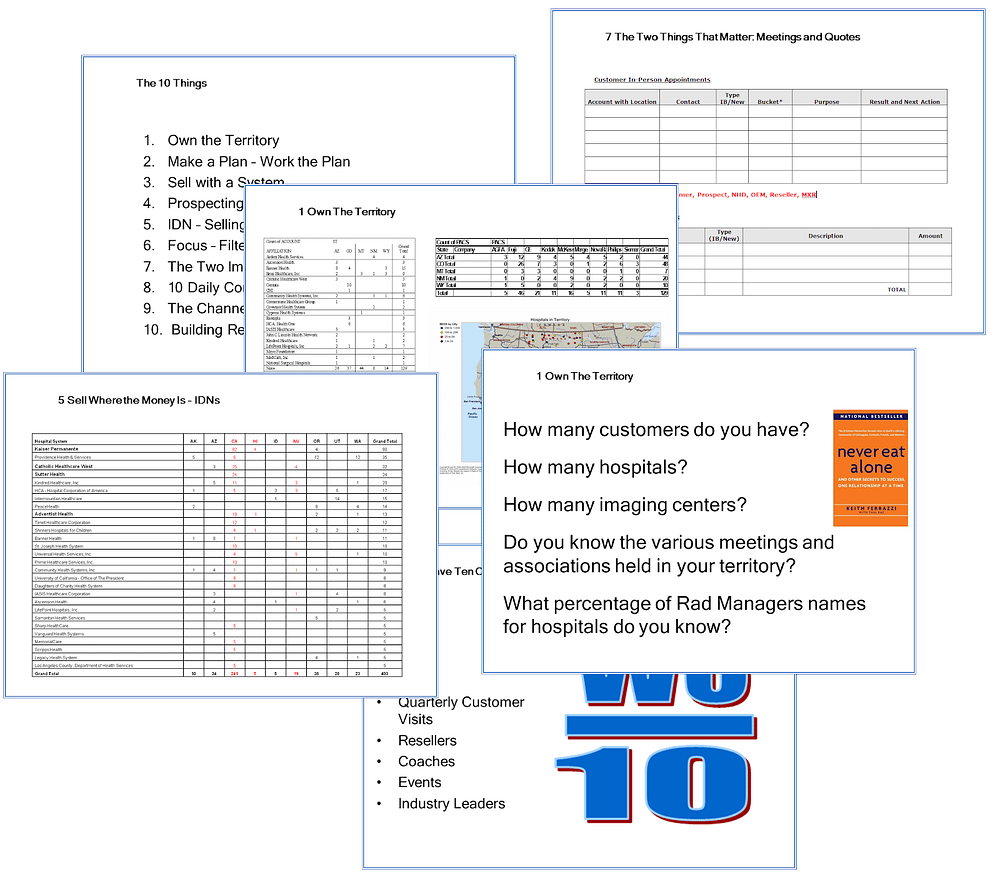
The playbook will be developed using the assets and information collected previously. If you already have a strong reporting culture in place, then we’ll just verify that the information you need to be reviewing regularly is included. If you don’t, then we’ll help you identify how to gather the information needed for your reports.
Similarly, if you already have strong messaging and marketing materials in place, we’ll just help you validate that all your salespeople are familiar with them. If not, we’ll show you how to develop these critical assets (as they’ll be integral to your salespeople’s skill development).
We’ll also ensure that your sales manager is comfortable with critical training tools (such as the most common objections playbook, role playing at each stage of the sales process, demonstration / presentation audits, etc) required to fulfil the plans we created.
Q: Is a Playbook really necessary?
There isn’t a coach in all of sports that doesn’t operate out of a playbook. There isn’t a winning team whose players don’t know and follow a playbook as if it were their bible.
The playbook allows your sales manager to be explicit about what their salespeople need to do, as well as how they as managers are going to support that salesperson activity / skill development.
Step 3: Help Salespeople Walk-to-the-Sale
This is where the rubber meets the road. The steps to this point were about goal setting, gathering data, planning, and getting your sales manager ready.
This step is about how to turn those plans into action, and do the week in and week out work with our salespeople.
We’ve established what it takes to be successful, written a playbook on how to execute, and now we simply have to help our people perform.
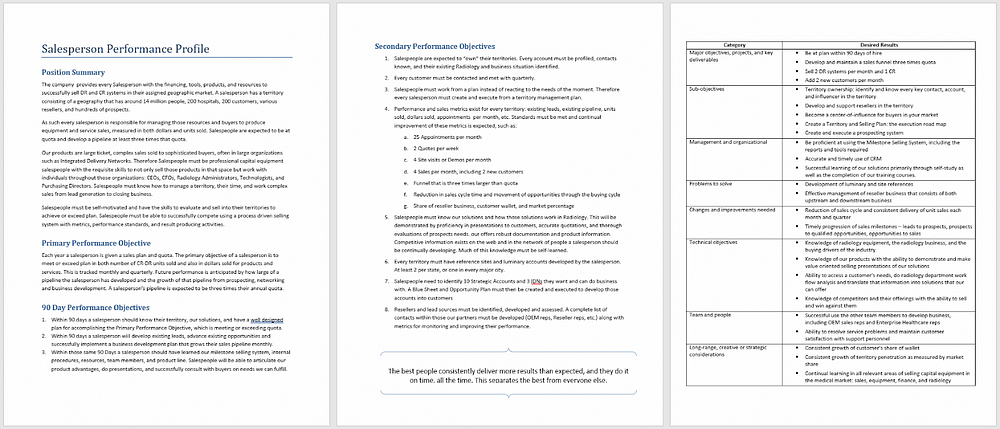
Bonus Step: Review and Repeat
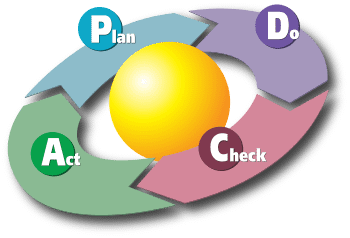
Okay - there’s a fourth step. A bonus step - the secret sauce that keeps you rocketing from one sales pinnacle to the next - over and over and over again. Let’s call it the “Continual Forward Progress” step.
It’s simple: review and repeat. Leverage your success by now working on new goals and priorities - the new set of skills that will blast your sales team’s result further into the revenue stratosphere.
As your first goals get accomplished, new goals will be added. The same is true for skills. We started by focusing on the most important activities and gaps, but as these get resolved we can make further progress by improving and working on new goals and skills.
Summing up...
If you can:
Focus on the high value, low disruption areas that can be overseen by your sales manager
Give your sales manager the tools to quickly identify both strengths, and “roadblock areas” for each salesperson
Give your sales manager the training / ability to help their salespeople break through these roadblocks
Ensure your salespeople (and sales manager) know the highest priority items they MUST complete on a weekly basis, and accept no lapses in these few critical areas (whether it’s sales activity related, or training / skill development)
Measure what matters frequently, and adjust focus based on the data (not preferences or salesperson stories)
Then you can add at least $1M - 3M+/year in topline revenue, with minimal disruption to your sales team.
There are two ways you can achieve this:
Option 1
Option one is to try to get your sales manager & sales team on board with these things, and hope that they can implement them on their own.
However, there are a few challenges with this:
- The issues that have stopped your team from doing this already, will continue to exist - it’s not simply an issue of knowing what to do, but rather an issue with actually doing the right things, at the right times.
- Speed of implementation is key here - trying to have your team figure all this out on their own will require trial & error, and it will take months (if not years) to get it tuned in to the level that you need it to add millions to your topline revenue.
- The cost of doing this on your own isn’t in the fees you save, it’s in the opportunity cost of the sales you’ll lose in the meantime.
Option 2
Or you can work with me and get your sales team working on the highest impact, lowest disruption areas immediately.
Some of the 119+ companies I've helped...
